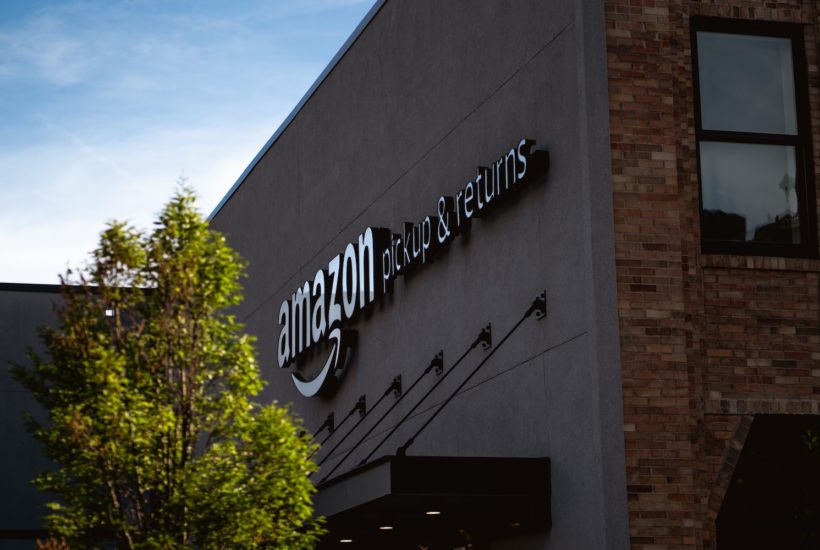Business
How Amazon plans to disrupt professional procurement
The procurement process in the B2B sector is fraught with problems. Complex procedures and slow fulfillment drive up costs and cause bottlenecks. Amazon is taking steps to make procurement simpler and save companies time and money. It is estimated that 75% of all products in the B2B segment will be purchased via online marketplaces by 2022 and this will be driven by Amazon.

Amazon is probably one of the best known companies in the world. We all use their services, whether it’s to purchase products or their cloud services. Now Amazon is shifting their focus to big procurement contracts.
There are significant complaints about traditional procurement systems in large companies and many employees and managers believe that the solution lies with Amazon.
Many other publications overlook breaking business news focused on marketing or other business strategies. Born2Invest mobile app helps readers to be up to date with the newest information in this field and others, among which finance, markets, cannabis, fintech and Asia.
Procurement contracts are moving online
Market researchers at Gartner are assuming that by 2022, 75% of all procurement contracts will take place via online marketplaces. Amazon is probably in a better position than any other company to take advantage of this new reality.
At the first “Amazon BusinessNow inform Exchange”, to which the e-commerce giant invited buyers from all over Europe to London, Amazon’s appeal became clear. Big procurement managers are crying out for greater efficiency.
“We still have far too many free text orders,” says Dietmar Harteveld, Head of SCM EMEA at Siemens UK, who manages an annual spending budget of $2.2 billion (€2 billion). “Colleagues write what they need and then a process starts,” he explains.
It can take up to three weeks for the right supplier to be found and there are a number of complications in most company’s processes. Suppliers needed to be entered into the ordering system, PO numbers need to be issued, deliveries tracked and payments made. There is a lot of friction in this process and a lot can go wrong, with real financial consequences. . “We wanted to reduce this, because it’s not efficient and it’s not the world we should be living in,” says Harteveld.
The digital procurement Business Intelligence via an online marketplace shortens this process from three weeks to three days, as Todd Heimes, director Amazon Business in Europe, promised.
Through a connection to the B2B marketplace, business customers have access to over 250 million products, which can be delivered within 24 hours and hundreds of thousands on the same day. This gives professional purchasers access to a huge assortment while reducing the maintenance effort for internal suppliers.
Employees want Amazon Business
The most important argument for the e-commerce giant, however, is that almost every buyer who orders by profession also orders privately on Amazon and considers the customer experience to be better compared to traditional procurement channels.
Because employees know the ordering processes on Amazon, it makes change management in companies that switch to digital procurement comparatively inexpensive. Acceptance problems are also unlikely. On the contrary, it is often even the employees themselves who demand that they are simply allowed to order the products they need themselves on Amazon.
“We have found that we order 200,000 pounds a year from Amazon, even though employees at our 630 facilities have so far been explicitly forbidden from ordering there,” says Keelie Leahy, Director of Innovation at the UK’s Busy Bees childcare chain.
But because the employees were not always able to find what they needed from the 300 suppliers recorded throughout the company, they switched to Amazon without permission and then settled their purchases by credit card. This, however, caused enormously cumbersome handling processes. To make life easier for herself, Leahy declared. “We have decided: If you can’t beat them, join them,” she says.
__
(Featured image by Bryan Angelo via Unsplash)
DISCLAIMER: This article was written by a third party contributor and does not reflect the opinion of Born2Invest, its management, staff or its associates. Please review our disclaimer for more information.
This article may include forward-looking statements. These forward-looking statements generally are identified by the words “believe,” “project,” “estimate,” “become,” “plan,” “will,” and similar expressions. These forward-looking statements involve known and unknown risks as well as uncertainties, including those discussed in the following cautionary statements and elsewhere in this article and on this site. Although the Company may believe that its expectations are based on reasonable assumptions, the actual results that the Company may achieve may differ materially from any forward-looking statements, which reflect the opinions of the management of the Company only as of the date hereof. Additionally, please make sure to read these important disclosures.
First published in INTERNET WORLD BUSINESS, a third-party contributor translated and adapted the article from the original. In case of discrepancy, the original will prevail.
Although we made reasonable efforts to provide accurate translations, some parts may be incorrect. Born2Invest assumes no responsibility for errors, omissions or ambiguities in the translations provided on this website. Any person or entity relying on translated content does so at their own risk. Born2Invest is not responsible for losses caused by such reliance on the accuracy or reliability of translated information. If you wish to report an error or inaccuracy in the translation, we encourage you to contact us.

-

 Cannabis1 week ago
Cannabis1 week agoMedical Cannabis vs Street Weed: Why Therapy Makes More Sense in 2025
-

 Markets3 days ago
Markets3 days agoGold, Liquidity, and Market Complacency Heading Into 2026
-

 Cannabis17 hours ago
Cannabis17 hours agoAgential Cannabis 2026 Set to Spotlight Southeast Asia
-

 Impact Investing1 week ago
Impact Investing1 week agoCOP30: Fragmented Climate Politics, Multi-Speed Transition, and Emerging Investment Opportunities
























